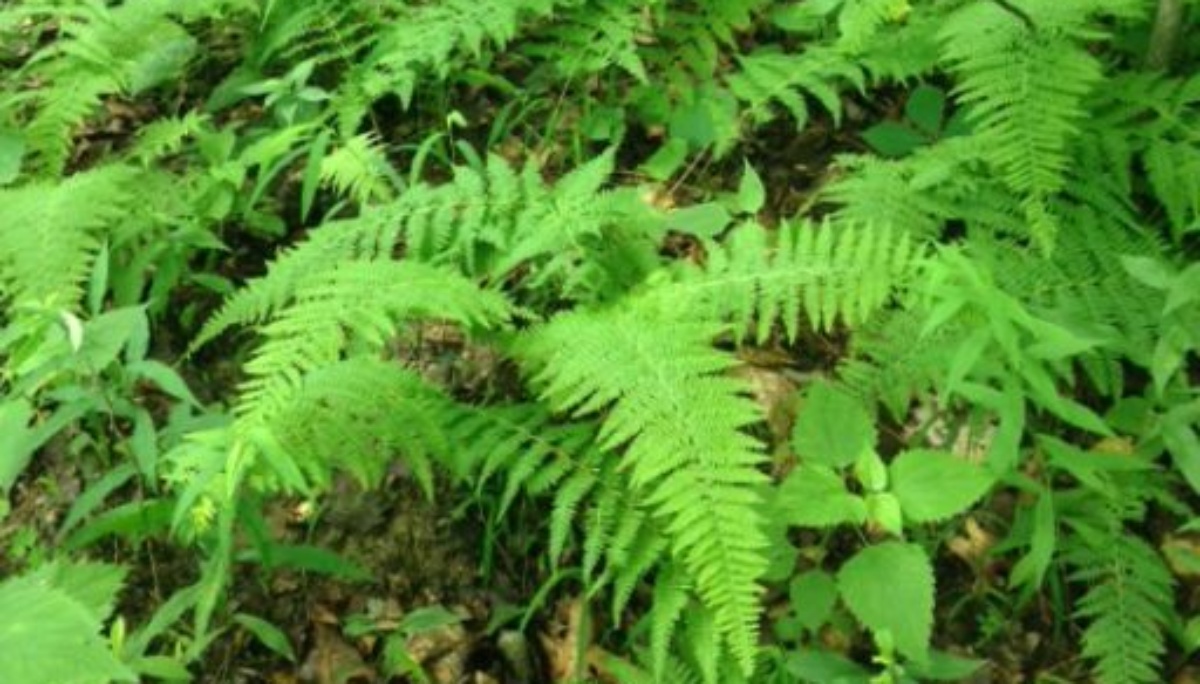I sat, in repose, on a big rock – taking a break from my walk in the woods. In retrospect – if it can be retrospective, with only fifteen words under my belt – “sitting in repose on a big rock,” to a person over the age of say, twenty, seems an oxymoron, soon to be revealed in the degenerative disks of the aging back, numb butt and tailbone, of said person formerly at rest on a rock. We have quite a few of these natural accoutrements – big rocks, and woods, in our rural Pennsylvania environs.

When I’m in the woods, I’m often compelled to sit a bit and contemplate what it is about our forestscape that I’m repeatedly drawn to and which makes me exhale such peace – in startling contrast with my work-world that I left below, in the valley.
A while ago, in one of those moments of respite, I sent a text to my sister-in-law: “Just chillin’ in the woods. Birch bark is so smooth and beautiful. Meditating on what it is that I love about these woods. Textures abound in chaotic, natural randomness.”
In our business I am Managing Editor, and I manage and control pretty much everything in my life. When I come to the woods I can just breathe and relinquish all control to God and appreciate the uneven, unexpected, natural terrain I encounter.
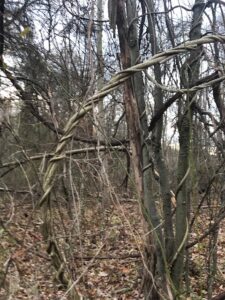
I noticed that in describing my beloved woodlands, I use a lot of un-words: unmanipulated, untrained, unplanned – and the two un-words above. As thoughtful English grammarians know, un is a prefix, meaning not or negative, or an opposite force in adjectives, adverbs, and nouns.
For me, when I describe what I feel when I enter the woods, it’s a description of what it is NOT. My woods are NOT manipulated by humankind; not planned to death, not trained to be a certain thing to humankind – they certainly are not even or expected. I like the French word for not, “pas.” Right about now I could go for some pas de plan, pas de structure, pas de control, etc.
This reminds me of Paul Cezanne’s comparison of Paris, “nature, starched and tormented” with Provence, “nature, unspoiled.” I could just as easily compare our domesticated rural communities with their neighbor, the woodlands. One is configured and tortured to the bounds of human perfection and the other is left to an ultimately lovelier, divine, loving-kindness –an environment in which one can literally palpate the presence of God, untempered by human meddling.
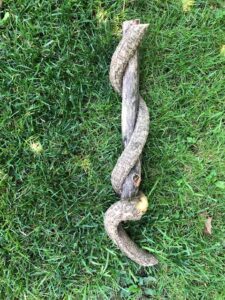
This doesn’t discount the fact that Paris and other grand cities of its caliber possess an appeal of the senses, because they clearly do. I found Paris aloof but alluring and it drew me into its “starched’ core in spite of itself.
Similarly, our pristine rural communities are the compelling reason we live where we live. Just short of the English formal gardenscape, complete with boxwood hedgerows, pruned, barely escaping their lives; our rural environs of trimmed, tamed, symmetrical landscape, collectively make up the pretty place that we identify as home.
Without this primarily German and French atavistic attempt to perfect nature, to domesticate, prune, sweep, polish, and control it, we wouldn’t want to live where we live. In fact, the few properties in our communities owned by people without the overwhelmingly contrary tendency to tidy-up or pretty-up their parcels are misunderstood, at least; fastidiousness, not running in their ancestral-line.
However, there is for me, a constant entreaty from the woods – an invitation from nature that begs me to temporarily leave the mimicry of my cushy neighboring community for its more unknown offerings. And, when I can’t accept the call to nature, I feel unbalanced – like an essential nutrient is missing from my diet.
There is something about those entwined vines/branches, which I call “twisted sisters,” that I run across in the woods, that make my heart leap a little bit when I see them. What is it about those twisted apparitions that are surely mistakes or flukes of nature, but just as surely send comfort to my core and balance to my soul?
Maybe it’s because they’re already twisted – misshapen, irregular, bent and mangled. They therefore pose no expectation of perfection from me. They’re fixed, finished, albeit imperfectly.
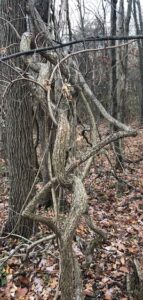
Natural curves in the landscape are much more interesting to me than the straight lines of human-made structures. Is there anything linear in nature – without bumps, bends, circles, winding, combined, unanticipated, multi-directional?
My dad, an old-school carpenter, helped to build the house of my oldest brother. As I recall – and I’ve been wrong before, so don’t quote me – Bill insisted on building his garage at an angle to the house. Also, as I recall, my dad told Bill that if it wasn’t square, it wasn’t right and it would never work. Witness – my brother’s angled garage, which works just fine, to my knowledge.
Similarly, I’m not a fan of ultra-modern architecture in homes – the style leaves me cold. This might have to do with the lack of fluid chaos, disorder, unplanned, asymmetry of the warm, natural world. Or, it might be that ultra-modern design utilizes little wood, stone, or plant material, the stuff of the forest, preferring glass, metal, and human technology for its aesthetic.
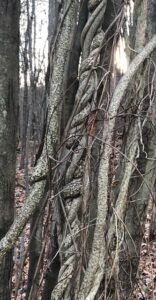
Nary a braided or tangled texture would be found in an ultra-modern human being’s environment. Me and my “twisted sisters” may live in a modern world and I’ve adapted to and even enjoy a bit of metal, glass, and a lot of technology in my home, but the woods are never far away.
